Top 7 industries in Montana
Montana’s top 7 industries, in order of prominence, are:
Let’s dive into each one.
1. Real Estate

While Real Estate isn’t the first thing that comes to mind when you think about Montana, in the past 10 years, it’s been one of the most prominent industries in the state, particularly in terms of GDP.
The Real Estate sector has been responsible for the largest portion of Montana’s GDP for the past 10 years¹⁶, comprising 13% of the statewide GDP.
In terms of GDP, Healthcare/Social Assistance and Manufacturing follow in close second and third, respectively, together comprising 18% of the state GDP¹⁶. All three sectors combined comprise 31% of statewide GDP¹⁶.
Find out all of Montana’s #1 industries by GDP, employment, personal income, and job creation in our article, This is Montana’s main industry (no, it’s not wheat).
2. Agriculture
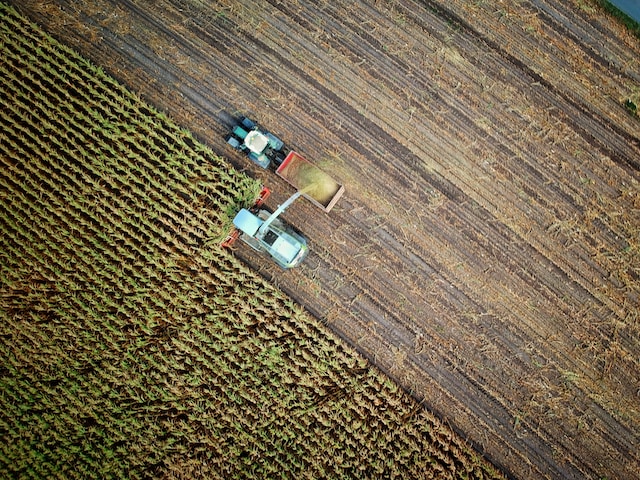
When most people think about Montana, they think of wide-open spaces that are perfect for agriculture.
These vast open spaces with rich soil gave birth to a strong agriculture industry long before Montana became a state in 1889.
When gold dried up in the 1880s, the agriculture industry continued to grow, allowing many towns to thrive. Agriculture has remained a driving force for the state’s economy ever since, centered around wheat and beef production.
Wheat is Montana’s largest export commodity. Montana exports roughly 100 million bushels of wheat annually, valued at $565 million¹.
Livestock, including beef, cattle, sheep, hogs, and dairy comprise 48%² of Montana’s agricultural income. Montana is also a major producer of sugar beets, potatoes, grains, and lentils.
Find out why wheat dominates Montana’s agriculture industry in our article, Wheat, Montana’s biggest crop.
3. Forestry
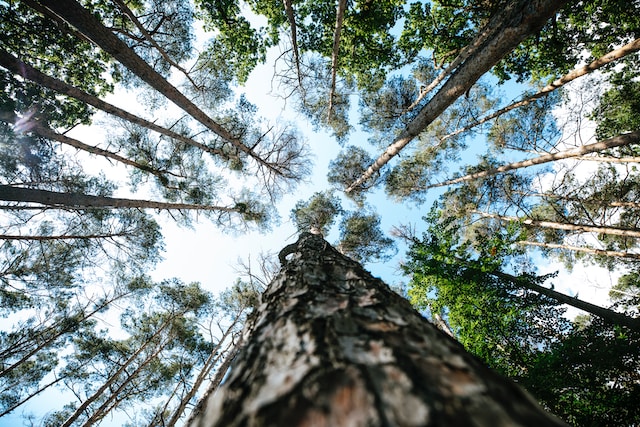
Several decades ago, wood products were Montana’s largest manufacturing sector, comprising 28% of the state’s manufacturing employment and 31% of labor income¹². The industry experienced its peak in 1987.
With the introduction of conservation initiatives throughout the late 20th and early 21st centuries, timber harvesting steadily slowed.
However, organizations across the state today are introducing new strategies to preserve Montana’s forests and wildlife, especially through burn prevention. A byproduct of these strategies is increased timber production, which has led to a growing wood products sector across the state in recent years.
Today, Forestry is a top industry in Montana. The state has 13 million acres (5.3 hectares) of commercial forests, of which half are owned by federal and state governments⁵.
Overall, Montana has roughly 20 million acres of non-reserved, productive timber lands, and of the industrial and managed forests, 860,000 acres are third-party certified for sustainable development¹³.
Did you know? 77% of the energy consumed by Montana’s forest products industry is generated on-site from renewable wood energy¹³.
4. Mining
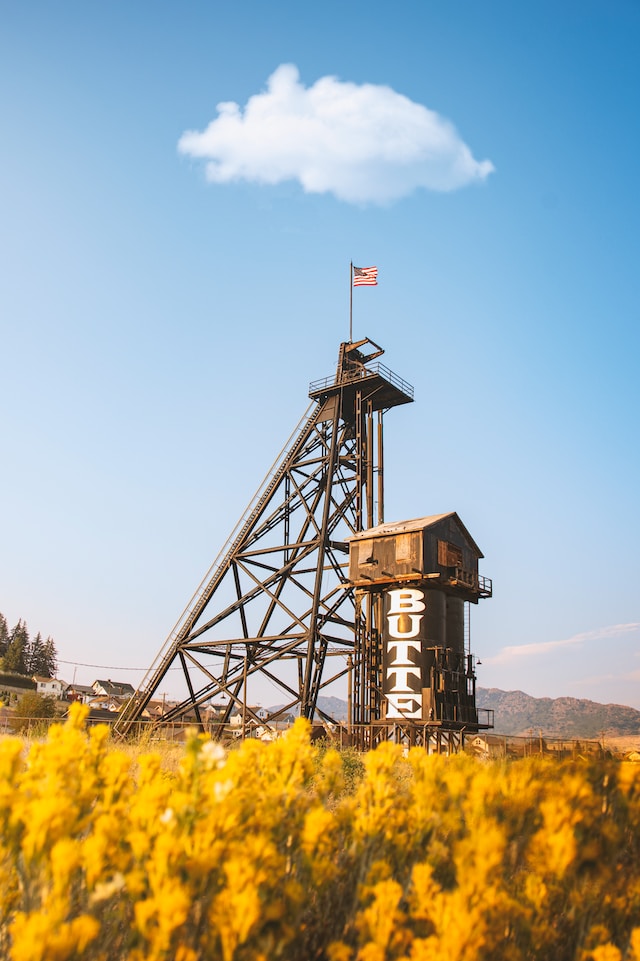
Montana was once home to the largest copper-producing town in the world, Butte, and some of the largest mining magnets in the United States, such as Marcus Daly.
The state’s mining boom kicked off in the 1860s when John White struck gold in Grasshopper Creek near present-day Bannack. From that day on, mining in Montana has been a fundamental local industry, its interconnections with engineering, equipment manufacturing, and other sectors having a widespread impact statewide.
The mining industry has shrunk significantly since the late 19th and early 20th centuries, but it remains one of the state’s top industries, producing palladium, platinum, copper, molybdenum, silver, garnets, and talc.
Did you know? For 20 years, Montana has been one of the largest producers of talc in the nation, a clay mineral that is commonly used in cosmetics. Montana comprises over 1/3 of nationwide talc production, most of which comes from high-purity deposits found in the southwestern region of the state.
Mining in Montana supports the employment of roughly 18,000¹⁴ people in various related and unrelated industries statewide. Industry production amounts to a market value of nearly $1.6 billion and supports roughly $428 million in annual tax revenues³.
Exploration activities across the state generate an additional $37 million in economic activity annually, which partially comes in the form of equipment and service purchases from various suppliers⁴.
What is Montana’s biggest natural resource?
Coal
Montana’s biggest natural resource is coal. The state contains roughly 30%¹⁷ of the United States’ estimated recoverable coal deposits.
Montana is rich in renewable resources and fossil fuels, making it one of the primary suppliers of energy to the rest of the United States. Large deposits of crude oil and natural gas are also found in the northern and eastern regions of the state.
Read how mining has developed in Montana from 1862 to today in our article, Montana mining – A long story short
5. Energy production
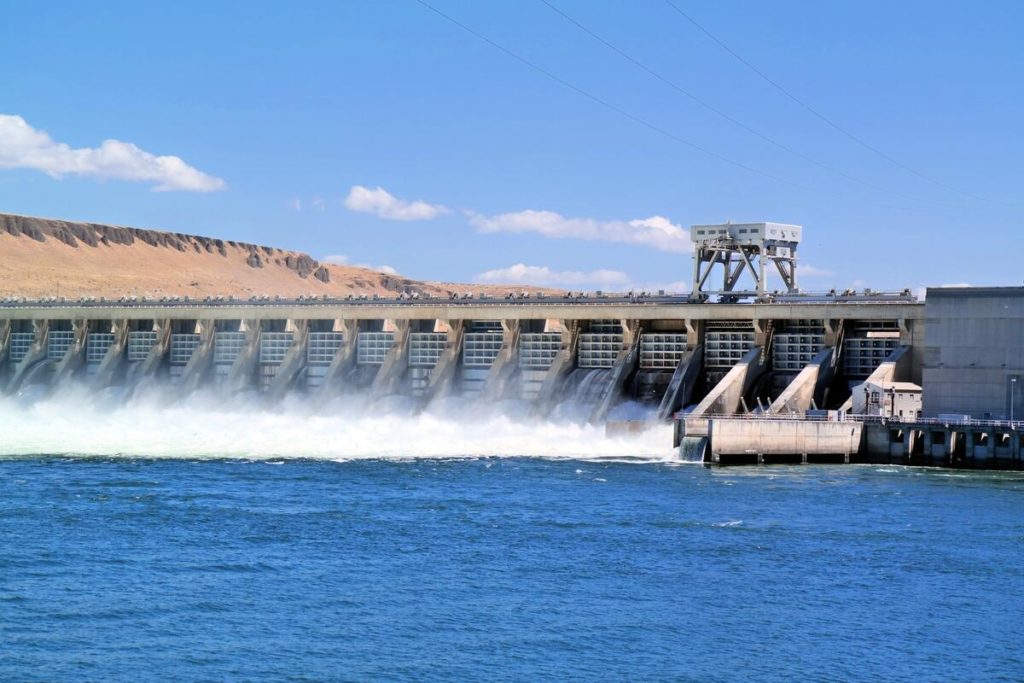
Energy production plays a major role in Montana’s economy, with coal-fired power plants generating the largest share of Montana’s electricity, comprising 42% of in-state generated electricity⁷.
Coal, petroleum, and natural gas are extracted from the soft soils of Montana’s plains, with the state’s largest coal-fired thermoelectric plants located in Billings and Colstrip.
Tremendous water resources across the state serve as Montana’s second primary means of energy production.
Roughly one-third⁵ of the state’s electricity is generated by water, while spring runoff from the mountainous western region refills groundwater, lakes, and reservoirs, perpetuating the flow of the great rivers that run across the state, such as the Missouri and Yellowstone.
Large dams, reservoirs, and power stations are located across the state, with the most notable being Fort Peck Dam, a 25-foot tall (76 m), 21,026-foot wide (6,409 m) dam on the Upper Missouri River, which can generate 185,250 kilowatts of power⁶.
Montana’s other energy sources include wind power (15%), natural gas (2%), and petroleum coke (2%)⁷.
6. Healthcare

Healthcare is one of the primary industries in Montana and has been on a steady and significant rise for several years in Montana. Its high wages and rapid growth have had a major impact on personal income statewide.
The Healthcare sector remains one of Montana’s largest employers, employing roughly 74,000 people who work in various roles, including physicians, nursing assistants, accountants, medical coders, and janitors⁹.
Employment in this industry has steadily grown 2.1% each year since 1990, with a slight decline in recent years due to the COVID-19 pandemic and a tightening of the labor market⁹. Since 2016, healthcare employment has expanded from 70,000 to nearly 74,000 individuals⁹.
Growing demand for healthcare across the state means that Montana will need 40% more healthcare workers than it currently has within the next decade, plus more replacements for soon-to-retire staff¹⁵.
The Montana Department of Labor and Industry (MDLI) projects Montana to add 5,170 jobs annually statewide by 2030, 25% of which are to come from healthcare⁹.
7. Services & Tourism
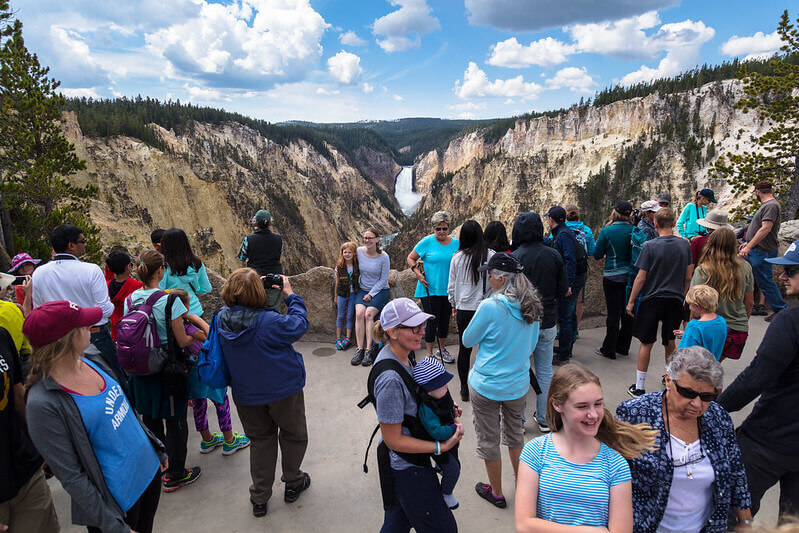
In recent years, the services industry has skyrocketed in Montana, becoming one of the state’s primary sectors.
Two factors are responsible for this growth. First, Montana’s steady economic expansion in recent years has resulted in increased spending on dining out, entertainment, and other such services.
Secondly, the state has become a top destination for tourists worldwide. Montana’s top tourist attractions include fishing, skiing, and national parks, the latter of which draw millions of tourists from around the globe each year.
In 2022, more than 12.5 million nonresidents visited Montana, spending roughly $5.8 billion in the local economy and generating $315 million in state and local taxes¹⁰.
Glacier National Park has hosted, on average, 3 million visitors annually for the past 5 years, while Yellowstone National Park has seen about the same number of tourists in the same time period. Visitor trends for both parks have been steadily climbing since 2008.
Big Sky Ski Resort, one of Montana’s best ski resorts, had a record-breaking 700,000 skier visits in 2020, despite the pandemic⁸.
As a result, the services industry plays a major role in the Montana economy.
Sources:
- Montana State University
- America’s Heartland
- Elko Daily
- Montana Business Quarterly
- Britannica – Montana economy
- Britannica – Fort Peck Dam
- U.S. Energy Information Administration
- Forbes
- Montana Department of Labor and Industry
- Montana State University
- Montana Department of Labor and Industry
- Montana Business Quarterly
- Montana Department of Natural Resources and Conservation
- KXLF Butte
- Montana Public Radio
- IBIS World
- Energy Information Administration

